Haworthias are lovely succulents that don’t require a lot of your attention. They can be grown indoors and outdoors, indoors being more suitable due to their weakness towards cold and demand for less intense light.
Haworthias have multiple varieties: Fasciata, Attenuata, Cymbiformis, Cooperi, Retusa, and many more. Some resemble Aloe Vera, some have white strips all over the foliage, and some are fleshy with a transparent lens. Most of the variety have similar care needs and can thrive together.
If you have a Haworthia but don’t know the type, this article can help you identify it. Here, I have tried to cover all the varieties of Haworthias.
After going through this guide, you will easily understand your Haworthia type and take care of it accordingly.
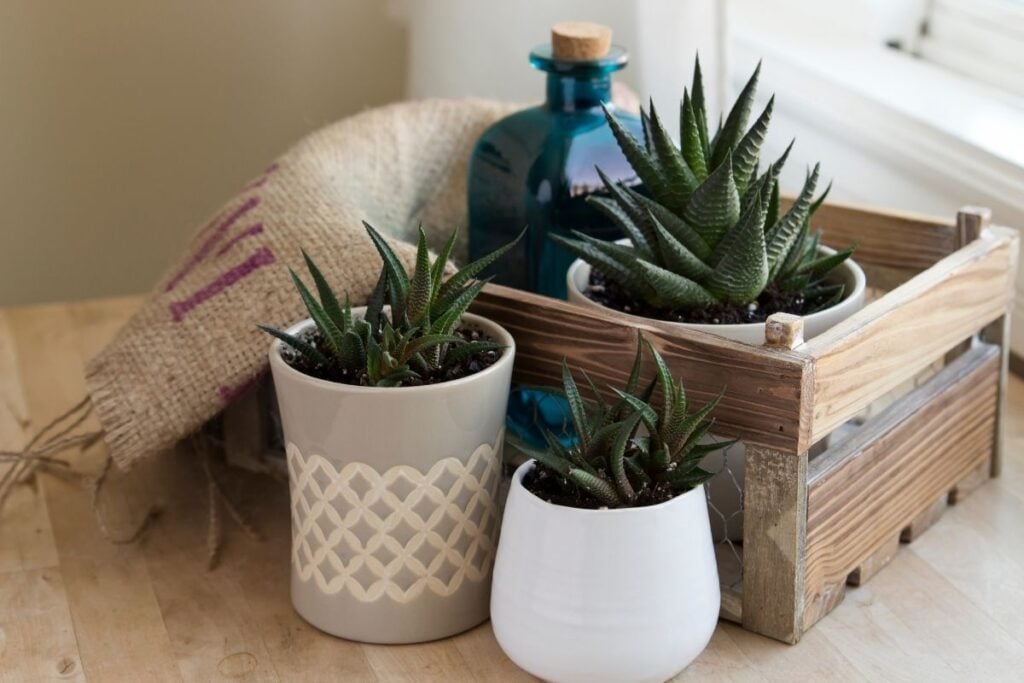
What are the different varieties of Haworthia?
Over 20 types of Haworthia are available.
Different varieties have different looks.
Some of the common types are:
- Fasciata
- Attenuata
- Cooperi
- Truncate
- Coarctata
- Cymbiformis
- Limifolia
- Setata
- Concolor
- Obtuse
- Reinwardtii
- Correcta
- Arachnoidea
- Mirabilis
- Maughanii
- Marumiana
- Nigra
Today, we will discuss some common Haworthias found in more or less every garden.
Maybe you will have one of these from this list.
What kind of Haworthia do I have? – Some common varieties
Along with the names, we will also share 2-line care tips individually.
Describing these varieties will help you understand which one you own and what care you need to give them.
Haworthia fasciata
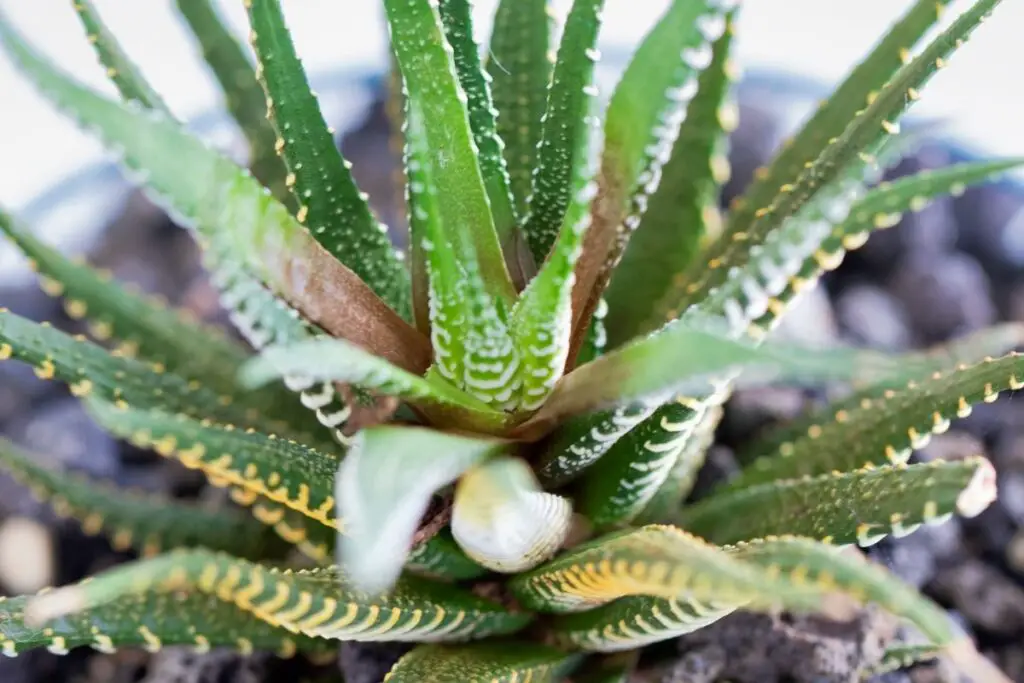
It is the most common and famous variety found in many houses and gardens.
They have deep green leaves, and the plant is in a rosette shape.
The leaves have white spots and stripes with sharp and pointed tips.
Fasciata is also called zebra plants.
You will also see some white flowers if the plant does well.
Fasciata has small rosettes measuring 7 cm in length.
When they turn mature, the leaves will grow about 10 cm to 30 cm long.
Care tips:
- They don’t require frequent watering.
- Every 2 to 3 weeks is enough.
- Water only when the soil is dry. Use cactus compost for fast drainage. Choose a partially shady area in your garden for them where the temperature stays within 10 to 21°C.
Haworthia attenuata
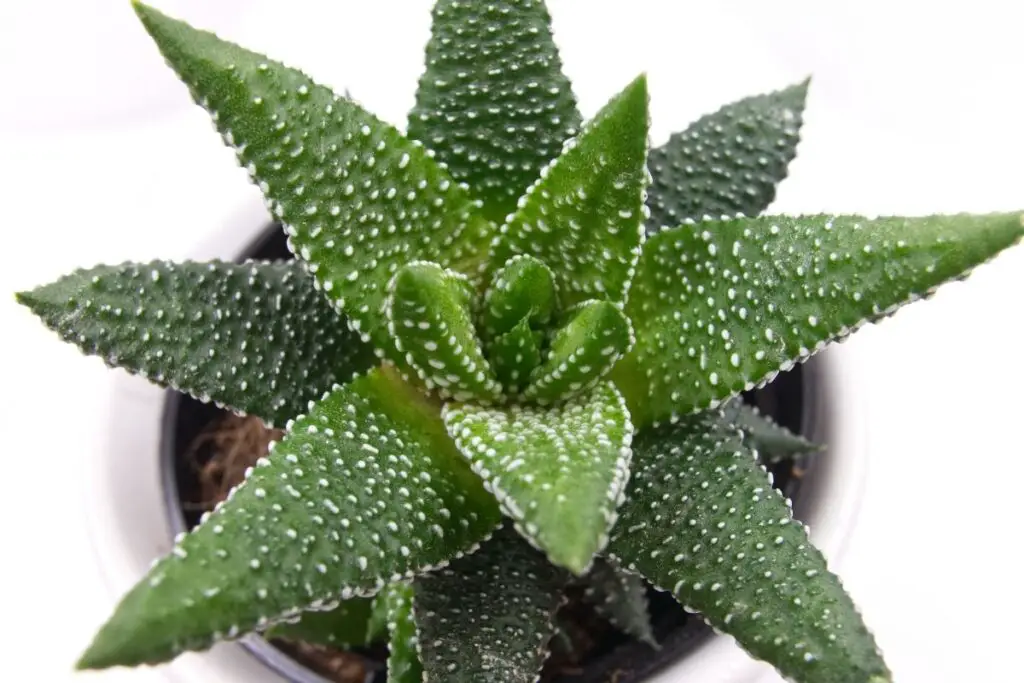
Attenuata is another common variety.
Most people tend to confuse Attenuata with Fasciata.
Attenuata grows in a clump way with spike leaves directing upwards.
The leaves are fleshy with pointed edges.
The leaves have white stripes.
Here is the difference. Attenuata don’t have dots like Fasciata.
They can grow around 7 cm to 25 cm in length.
Care tips:
- Their leaves are quite stiff. So, they can stay without water for some weeks. But make sure they get adequate water during the spring and fall. They must be evenly moist to stay hydrated. During their summer dormancy and winters, water them rarely for hydration.
- You can use cactus soil or any other well-drained soil. Consult the soil article for Haworthia to get more information about it.
- The minimum temperature must be about 5°C or above. The sunlight must be filtered or partial.
- Repot every 2-3 years to rejuvenate their growing environment.
Haworthia Cooperi
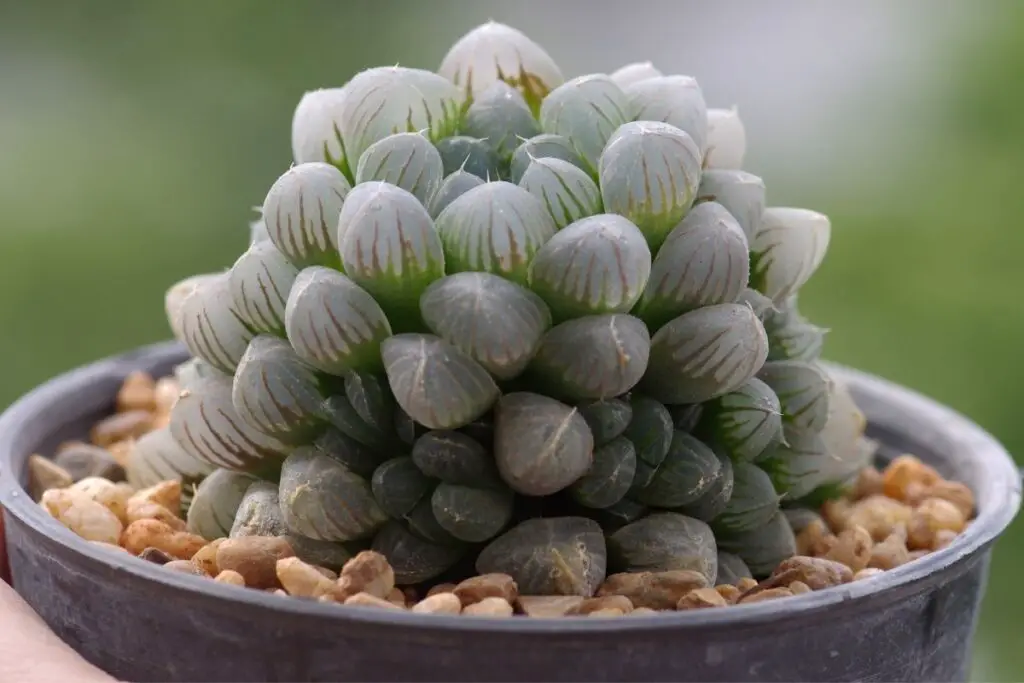
Another common yet different from the above two is the Cooperi variety.
They have a beautiful translucent look.
Their leaves are fleshy and have a transparent lens on the tips.
The leaves of some Cooperi look as if lots of water is preserved in them, and if popped, it will burst like a small balloon.
The foliage is smaller in size compared to the above two varieties.
The plant will grow only up to 2 inches.
Care tips:
- They need medium watering and light. The younger ones will need more water than the older ones because the former still needs to grow, whereas the latter is already mature. They enjoy a balanced environment.
- Repot only when they look outgrown. Since these varieties are small and slow growers, frequent repotting is not required.
Looking for gardening supplies? We have tested 100's of products before recommending them to you guys. Check out our best pick below:
| Image | Gardening Supplies | Best Price? |
|---|---|---|
 Top
Top Top
Top | Raised Garden Bed Kit | Check On Amazon |
 | XLUX Soil Moisture Meter, Plant Water Monitor, Soil Hygrometer Sensor for Gardening, Farming, Indoor and Outdoor Plants, No Batteries Required | No Results |
 Top
Top Top
Top | 82 Pcs Garden Tools Set and Extra Succulent Tools Set | Check On Amazon |
 | Joeys Garden Expandable Garden Hose with 8 Function Hose Nozzle, Lightweight Anti-Kink Flexible Garden Hoses, Extra Strength Fabric with Double Latex Core, (50 FT, Black) | No Results |
 Top
Top Top
Top | Dual Chamber Compost Tumbler | Check On Amazon |
 Top
Top Top
Top | Sunnyglade Plant Stakes | Check On Amazon |
 Top
Top Top
Top | Organic Cold Pressed Neem Seed Oil | Check On Amazon |
 Top
Top Top
Top | Mighty Mint Gallon :-Insect and Pest Control Peppermint Oil | Check On Amazon |
 Top
Top Top
Top | Scotts DiseaseEx Lawn Fungicide | Check On Amazon |
 Top
Top Top
Top | Jacks Classic 20-20-20 All Purpose Fertilizer | Check On Amazon |
 Top
Top Top
Top | 30,000 Seeds Pollinator Attracting Wildflower Mixture | Check On Amazon |
 Top
Top Top
Top | Survival Vegetable Seeds Garden Kit-Over 16,000 Seeds | Check On Amazon |
Haworthia truncata
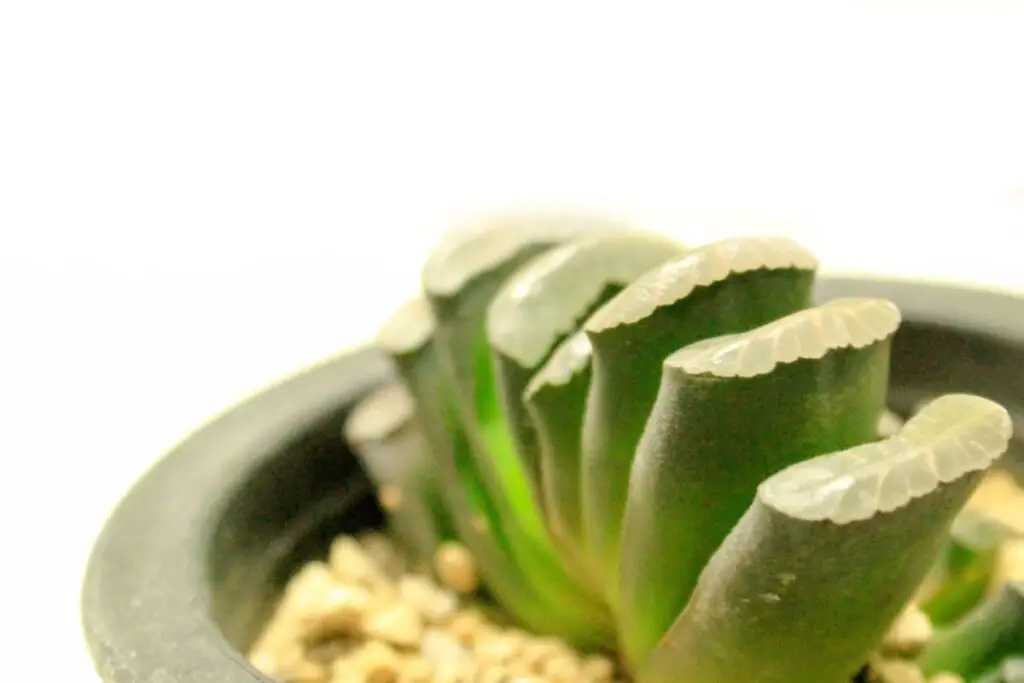
The name is borrowed from horse’s teeth because these are quite different from other Haworthias.
They look as if half of each leaf is pruned from the middle.
They develop in clumps and look unique.
The leaves look deep green with pale grey lines and flat endings.
They also have lenses like the Cooperi variety that absorb light and produce white flowers.
Though Haworthias are easy to grow, this variety is tough to manage.
They come from the sandy areas of Cape Province.
They are expensive due to their look and their lens patterns.
They will grow up to a height of only 2 cm and spread about 10 cm.
Care tips:
- They are weak towards cold temperatures, so make sure the winter temperature around them should stay within 5°C.
- These varieties are sensitive to the direct sun so never expose them under the full sun. Always let them have filtered sunlight.
- Be careful with watering, especially during the winter. The soil for them must be porous, sandy, and dry. They are propagated only from seeds.
Haworthia coarctata
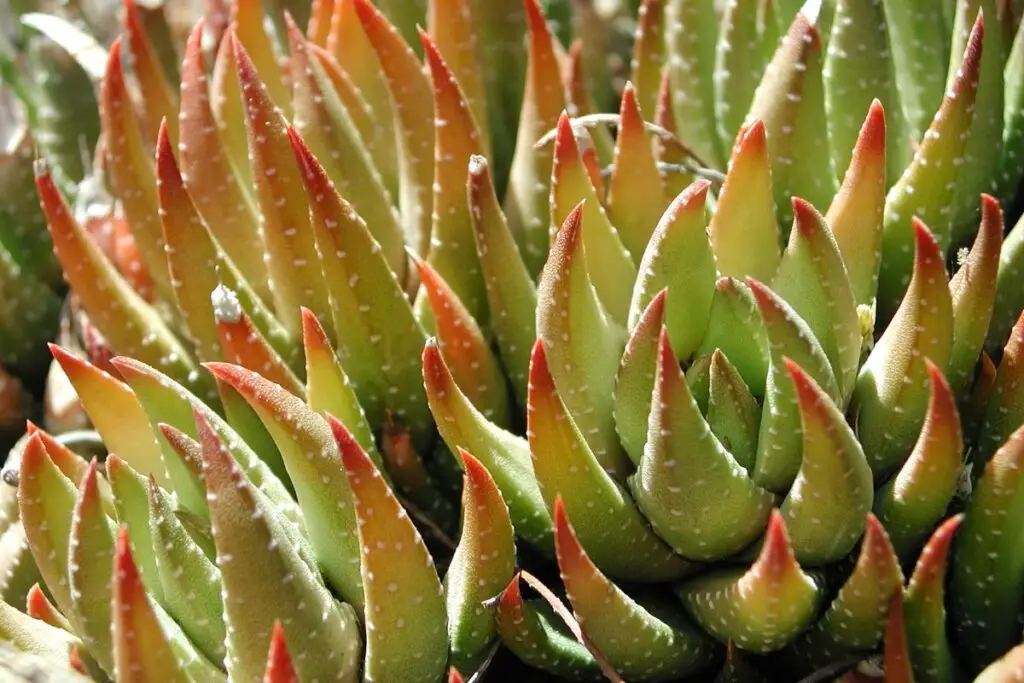
The leaf pattern resembles that of Fasciata and Attenuata, with white stripes.
In these two types, the leaves are open, but in Coarctata, the leaves are compact and clenched in a fist.
The leaves have a sharp ending and look like claws.
The leaves may be green, but the tips have reddish or orangeish colors.
They can turn pink during extremely cold temperatures and look beautiful.
They will produce offsets if they receive enough light and stay healthy.
They are also called Haworthiopsis Coarctata.
Coarctata can grow around 30 cm tall.
Care tips:
- Water at an average rate, only when the soil is dry. Reduce during winters.
- Use cactus soil mix or add gravel to the soil bed for sound drainage.
- Let them have full sun to partial shade. The full sun is good if it is soothing morning sunlight. They can tolerate a minimum temperature of 25°F.
Haworthia cymbiformis
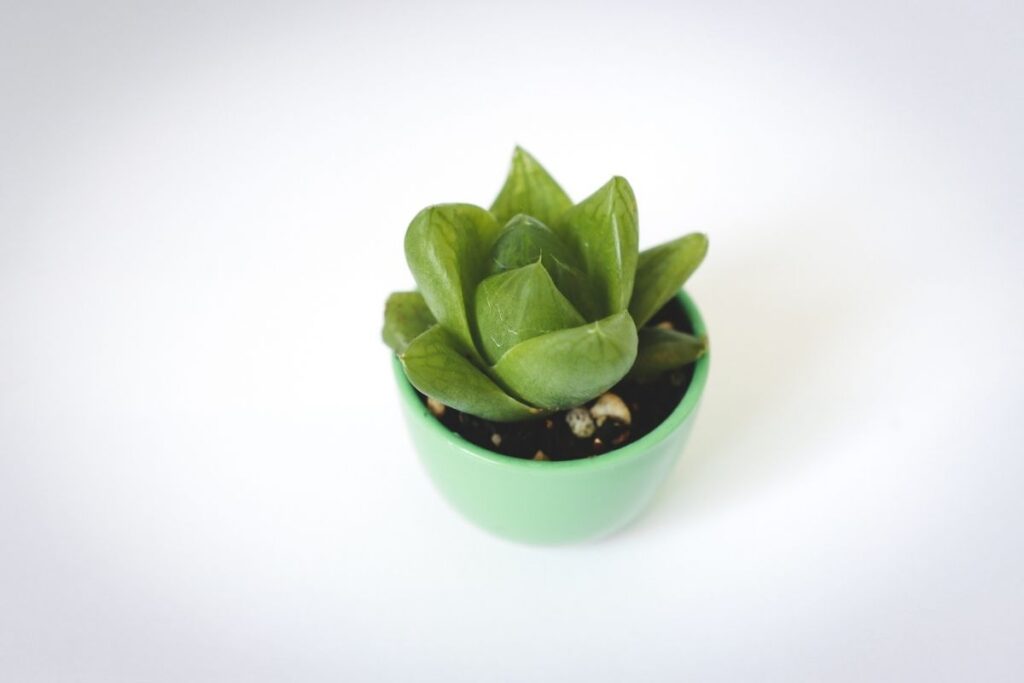
The names also know this variety of Cathedral Window Haworthia, Window Boats, Window Haworthia, Windowed Boats, and Window-Formed Haworthia.
The reason Cymbiformis have these names is that they have a rosette shape.
This kind of rosettes is significantly found in the cathedral churches near the windows, thus the names.
The color is pale green, and the foliage looks fleshy and usual.
They don’t have any stripes or dots.
They look in the shape of a boat.
They can grow around 3 inches tall and 4 inches in width.
Their flowers are white to pale pink with brownish-green veins.
Flowers emerge during the mid-summer to early summer from an 8-inch inflorescence.
Care tips:
- Use cactus potting mix for container plants. Add 50% coarse sand or gravel to the soil bed to improve drainage. You can also add horticultural pumice, perlite, or poultry grit.
- They can tolerate bright light but need protection from the sun’s hard rays, especially during summers. Water when the soil feels dry. Be careful during the summers and winters.
- Though Haworthias don’t need much fertilization, slight feeding with a diluted fertilizer during the growing seasons can boost their growth.
Haworthia Limifolia
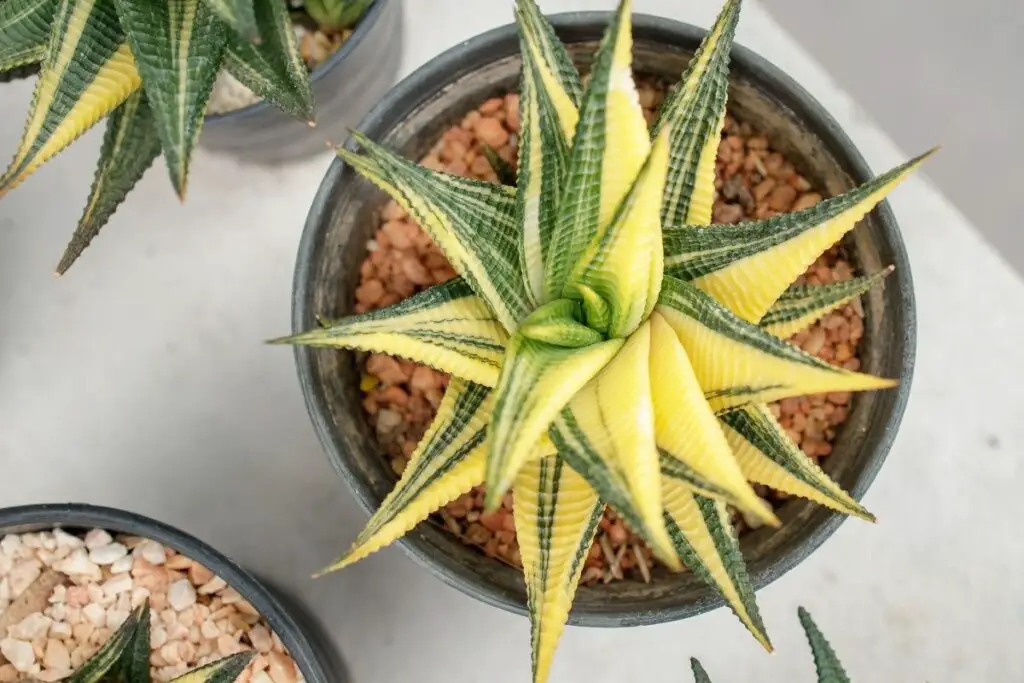
These are short cacti succulents having fleshy green leaves.
They have a distinctive texture and rosette shape.
They are also called Fairy Washboard because they look like a washboard.
The leaves have light white lines all over.
The pattern is the same as the zebra varieties, but the leaf appearance and growth type are quite different from others.
They grow quite spread as if falling apart yet compact.
The foliage is broader than the zebra varieties.
They grow around 4 inches; their leaves have a deltoid shape with sharp tips.
The flowers are white with greenish-brown midrib, two-lipped tubular shapes, around 0.6 inches.
Care tips:
- Use well-drained soil.
- Add coarse sand to the soil bed for the in-ground plants.
- Avoid using sand too much as that can get clogged. Let the soil dry before watering.
- Use a shallow container as their roots take years to grow deep. Let them have indirect sunlight but no full shade.
Haworthia setata
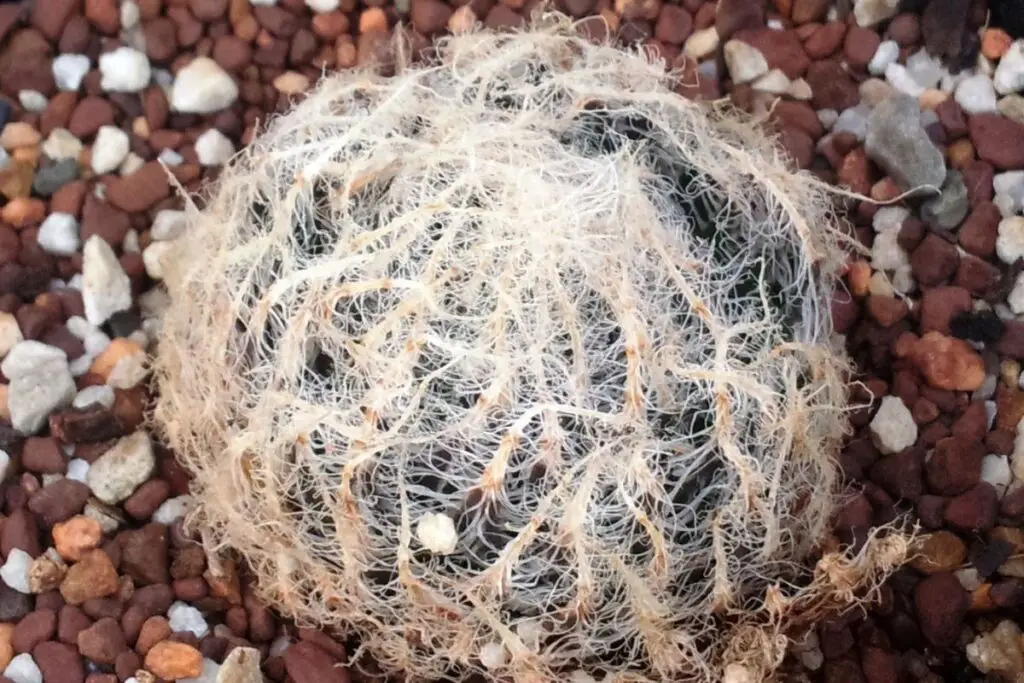
This variety has leaf rosettes and grows around 5 to 10 cm.
The foliage is green, soft, and has lots of transparent white hairs that look as if the plant is covered with webs and nets.
This look makes them distinctive from others.
This particular variety has other varieties with different sizes of rosettes, lengths of hairs, and densities.
They are quite difficult to find and even tricky enough to propagate.
That is why they are rarely available.
Care tips: They are from Cape Province need dry areas to thrive.
Plant them in well-drained soil.
Water them carefully, especially during the winters, as they absorb water very slowly due to low evaporation.
They can tolerate winter temperatures around 12°C.
During the summers, let it stay under partial shade.
Haworthia Concolor
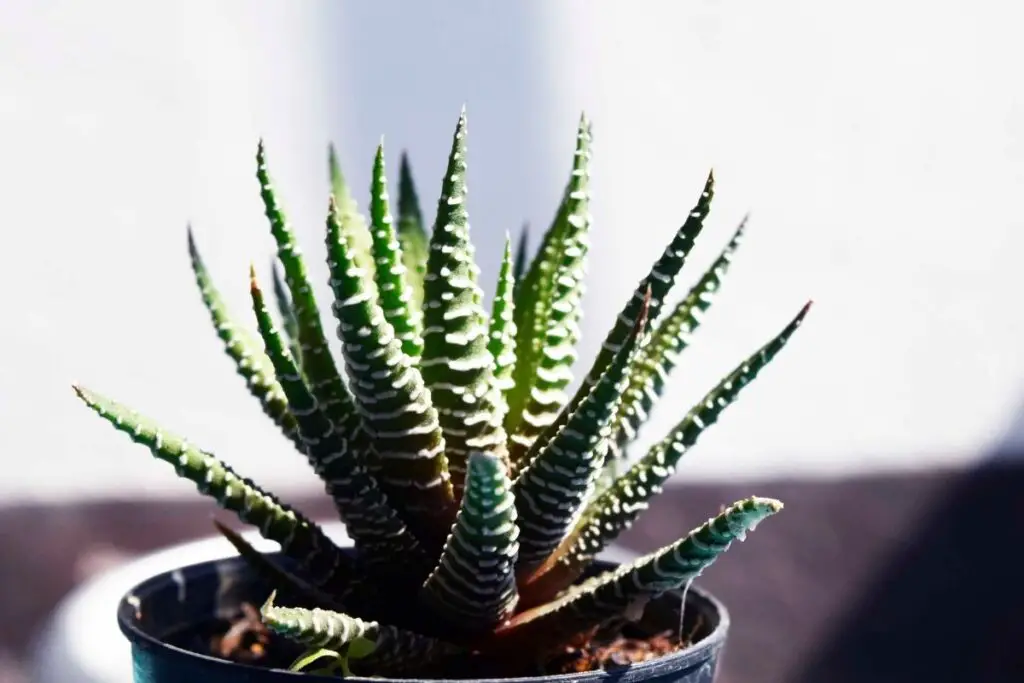
Their leaves resemble small cucumbers.
They look like Fasciata and Attenuata.
The only difference is in the white marking.
Fasciata has both dots and stripes, and Attenuata has only stripes.
Concolor has only dots all over the leaf surface.
It grows around a height of 15 cm.
Care tips:
- Water them at an average rate when the soil gets dry.
- You can use cactus potting mix for potted plants.
- For garden beds, you can add gravel and coarse sand.
- A place with a mixture of both full sun and partial shade will be ideal. Make sure that the temperature around the plant stays within 20°F.
Haworthia obtusa
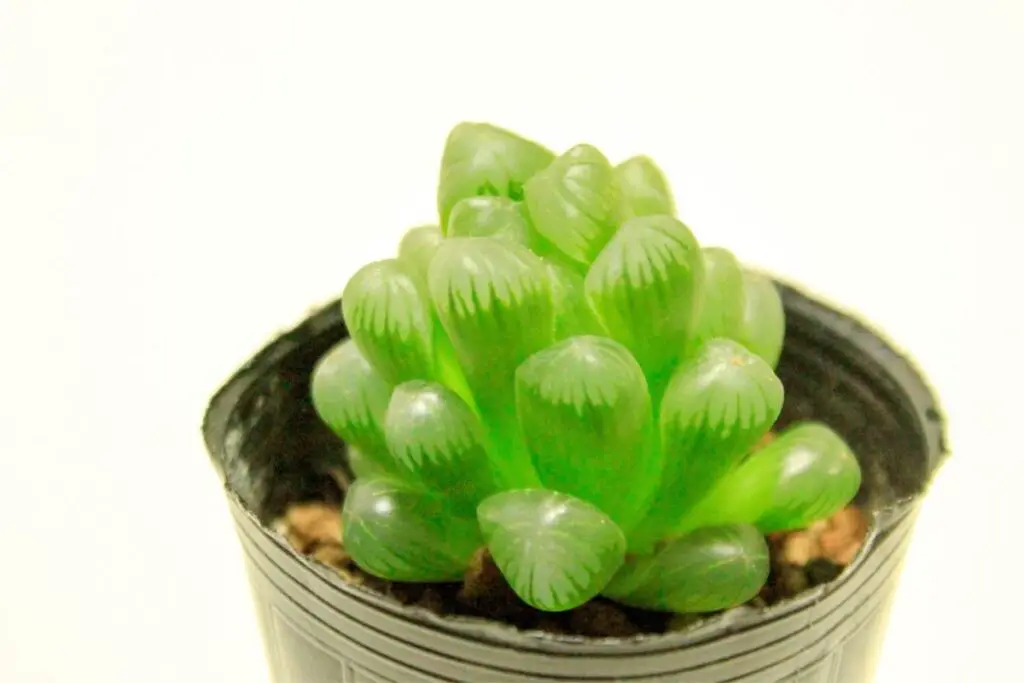
They are unique from other plants.
Their leaves look like the Cooperi varieties, but still, their appearance is different.
The tips of the leaves look like water droplets.
Some green lines get mixed with the bottom green color below their transparent lens.
They will grow pups in clusters once they reach 10 cm in diameter.
Care tips: Plant them in well-drained and porous soil, water carefully, let the soil dry before watering, and find a partial shade for planting.
Haworthia Retusa
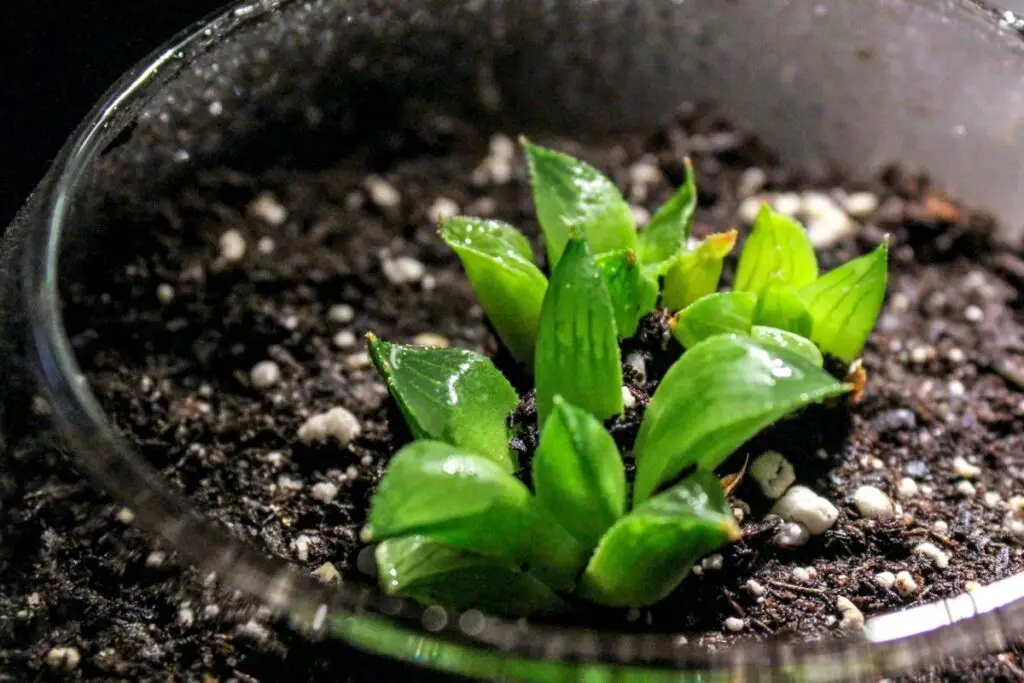
Another different-looking plant is H. Retusa.
The leaf colors and their look are slightly like that of Cymbiformis.
But the leaves are fleshier than them.
The difference is that, in Retusa, the leaves bend slightly outwards.
Care tips:
- Plant them under filtered light. They will grow best in indoor light setup.
- Let the soil dry before watering. Use well-drained soil. For beds, use gravel or coarse sand and for pots, use cactus potting mix.
- You can skip fertilizing and re-pot them timely.
Haworthia Reinwardtii
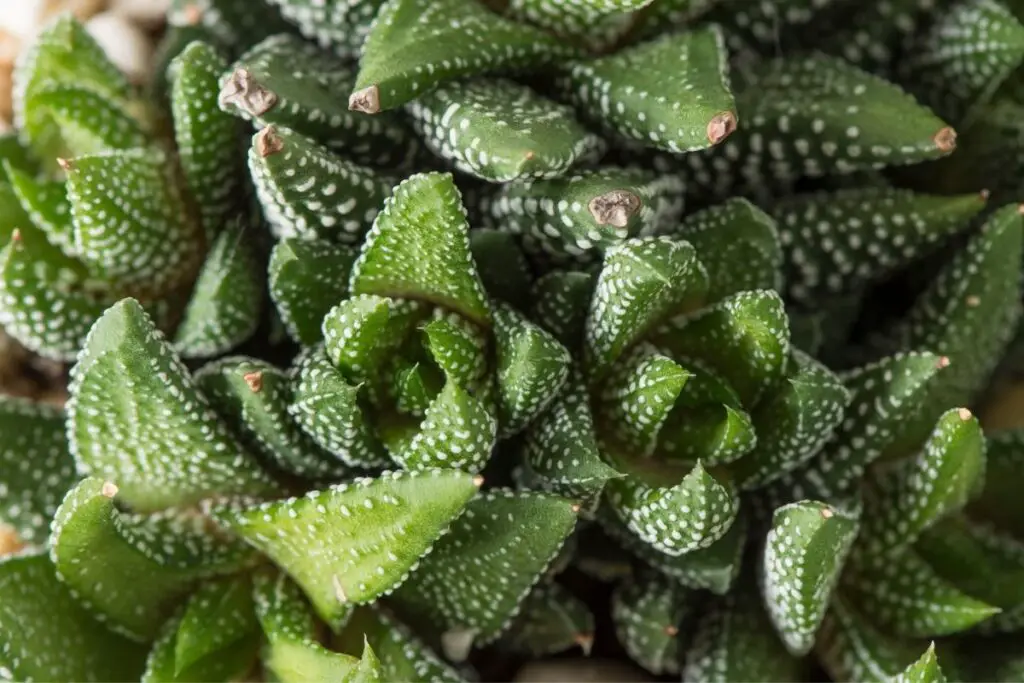
Again, the patterns of these varieties look similar to fasciata and attenuata.
Their growth form is a bit different.
They grow in clusters, and their leaves have white stripes.
But the difference is, in this variety, the white stripes are half, not full like the attenuata.
People confuse them with Coarctata.
Both look the same, but the difference is spotted in the leaf size.
The Coarctata leaves are slightly longer, more compact, and more pointed than the Reinwardtii.
The leaves stay medium compact.
When the leaves begin to open apart, it means they lack sunlight.
Care tips:
- Water them when the soil gets dry.
- Place them under indirect sunlight and don’t over-feed them.
- Fertilize them only once in spring and once in fall.
- Ignore if you feel confused.
Haworthia Correcta
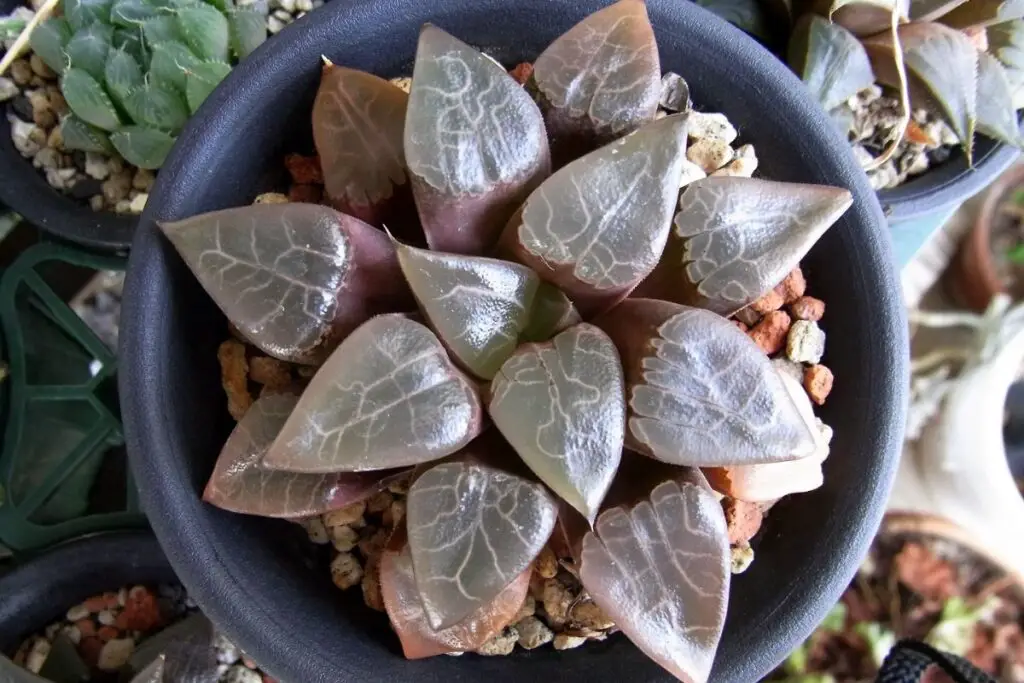
This variety has a remarkable appearance.
The leaves are fleshy, and they bend outwards like the Retusa.
Their growth looks like blooming flowers.
The most amazing thing about this variety is their leaves.
The color is deep green, and the leaf pattern is highlighted with veins.
There are also variegated varieties like green and orange or only chocolate.
They have a large lens at the tips.
When they become weak, the leaves will stretch in the upward direction.
The leaves stay quite compact.
This compactness will get lost and fall apart if they are not healthy enough.
Care tips: They are sensitive to direct sunlight. High-intensity sunlight can lead to browning and sunburn.
Their care tips are the same as the other varieties – indirect sun, average watering, well-drained soil, and average room temperature.
Haworthia Arachnoidea
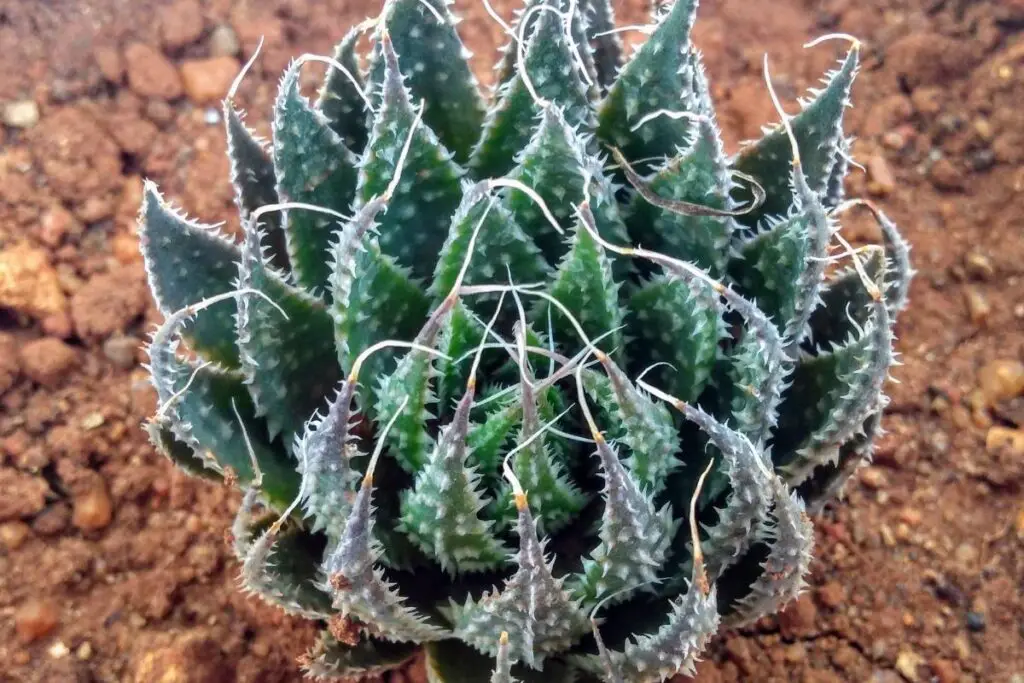
There are two types of Arachnoidea: Arachnoidea var. Scabrispina and Cobweb Aloe.
The Scabrispina have hairs like Haworthia Setata.
But this variety has smaller hair than them.
They have a round rosette covered with these hairs, which are spines.
The leaf tips are pointed with orange color.
They can grow about 5 inches in diameter.
The Arachnoidea Cobweb Aloe has solitary rosettes.
They, too, have hairs like the Setata, the same size.
The difference between Setata and Cobweb is that the former reached only 5 to 10 cm across, but the latter can reach about 17 cm in diameter.
Cobweb needs time to grow at such lengths.
But once they grow, it looks great.
Care tips:
- It is the same as the filtered sun, average watering, and sound drainage.
- You can use a combination of soil, poultry grit, pumice, and perlite.
- Wait for one week to water after repotting if you are doing it in the cooler months.
- Get rid of the dried leaves too.
- Check for pests.
- If infested, soak the plant in warm water for 10 mins, let it dry, and then plant back.
- Soaking helps to remove accumulated salts and comforts the roots.
Haworthia Mirabilis
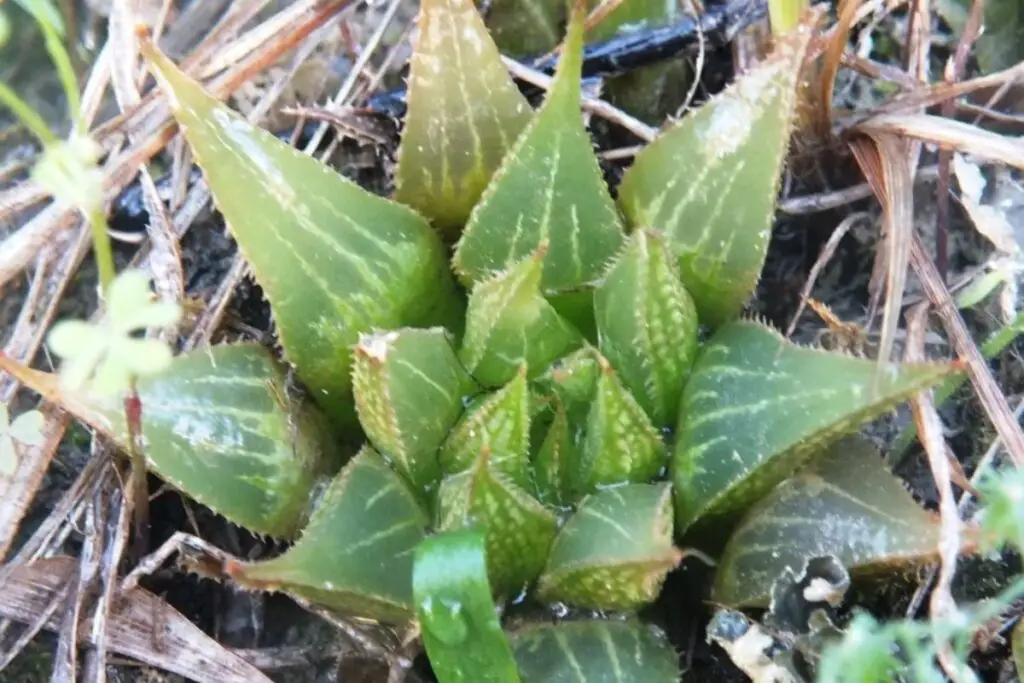
These varieties are less bold and spiky than the other varieties.
The leaf grows by bending outwards smoothly.
Like the Retusa, they don’t have the folding from the bending point.
The color is pale green; they are short and chunky.
Some Mirabilis species have light brown leaves.
The top side is glossy and transparent.
Since they are small, they look ideal for pots.
Care tip: It is the same as other Haworthia varieties.
Haworthia Maughanii
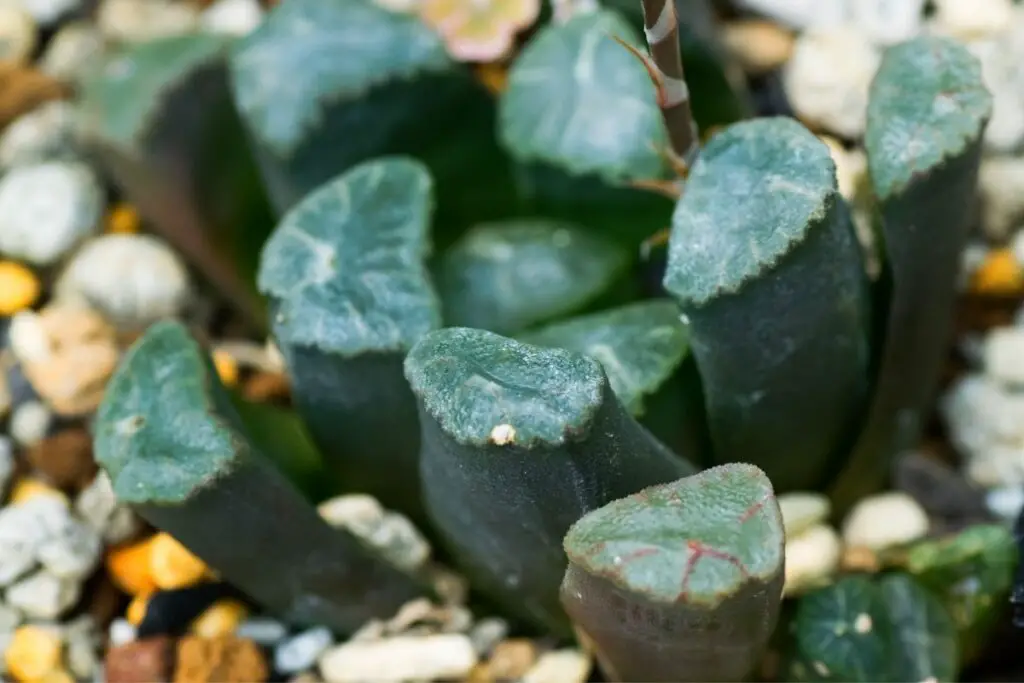
They look the same as Truncata.
The difference is in their color.
Maughanii has fleshy leaves and flat ends.
They look as if broken from the middle, like Truncata.
Truncata leaves are deep green, and Maughanii is normal green.
Another difference is in the methods of propagation.
Unlike Truncata, Maughanii can be propagated from leaves, seeds, and offsets.
Care tip: Same as the other varieties.
Haworthia Marumiana
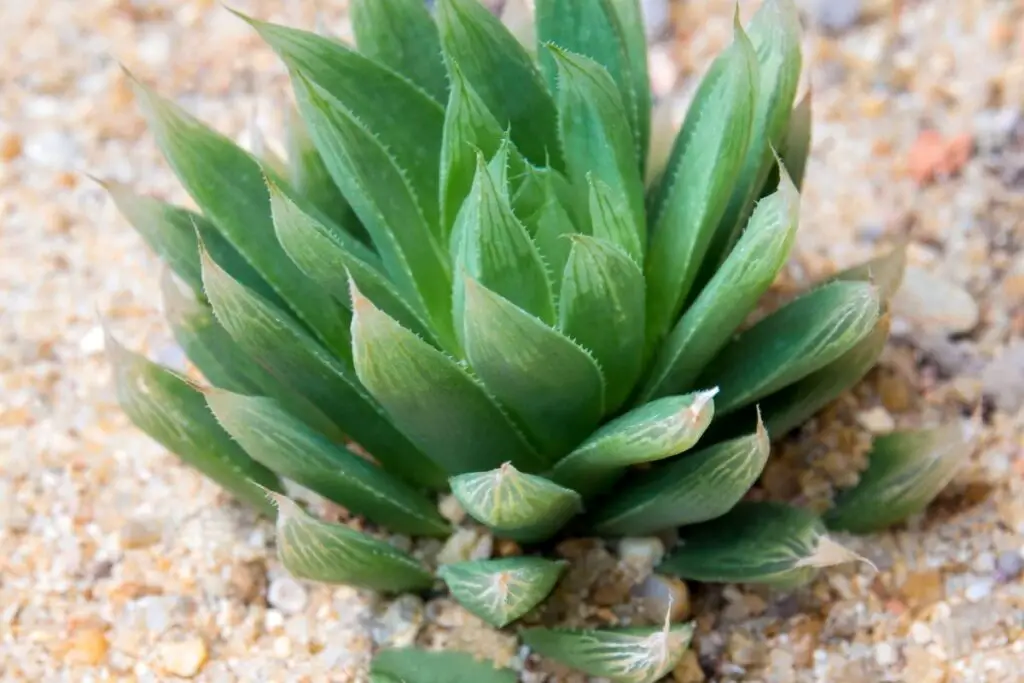
They are stemless plants and develop in clumps.
The leaves have a mild green color.
Their edges have tiny spines, and their tips are sharp.
The tips are longer and thinner than the other Haworthia varieties that look slightly similar to Marumiana.
When the sunlight falls upon them, the leaves seem decorated with crème spots.
Marimiana is native to zones 10-11, at 10.
They can reach about 12 cm in length and looks great in containers.
However, you can even try ground planting.
Care tip: Same as others.
Haworthia Nigra
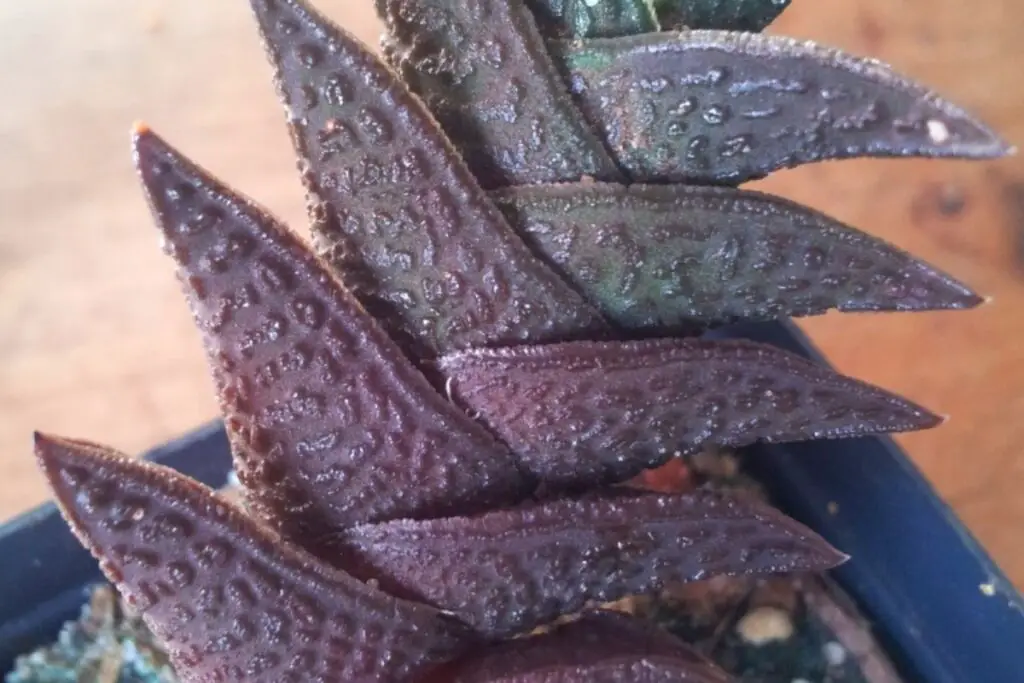
A unique and different type of Haworthia, Nigra varieties is sometimes called Black Haworthia.
The leaves have a deep greenish-black color.
They can grow around 4 inches.
The leaves are sharp, partially folded, and emerge from the middle of its rosette.
Each leaf grows on top of another, holding the center.
It gives a piled look.
Sometimes, they may look as if one boat over another.
They make a column of three ranks or tiers.
The mature plants will grow flower stems bearing white flowers in late spring or summer.
Care tips:
- They thrive well at zones 10-11. They will tolerate a temperature above 10°C but within 25°C.
- Improper watering can destroy the plant and its look, especially overwatering. So, be careful while watering.
- Let them have bright sunlight but not the direct sun or dappled shade.
- They can change color during winters and drought conditions and look beautiful.
Final thoughts
There are many more varieties within varieties found in the Haworthia group. The ones I have discussed till now are some of the most common varieties available widespread. By going through this article, I hope you get to know which type of Haworthia you own.
The care tips are more or less the same: filtered sunlight, average watering, sound drainage, room temperature, no high humidity, and repotting every 2-3 years.
The only difference is in the zones, propagation methods, and temperature. However, they won’t mind if the ranges go slightly up or down than their ideal range. They will still grow without any hassle with proper care and maintenance.
Reference: The Haworthia Society, Botanical Studies, University of Wisconsin-Madison, Sciencedirect, Researchgate, Haworthia Study.
